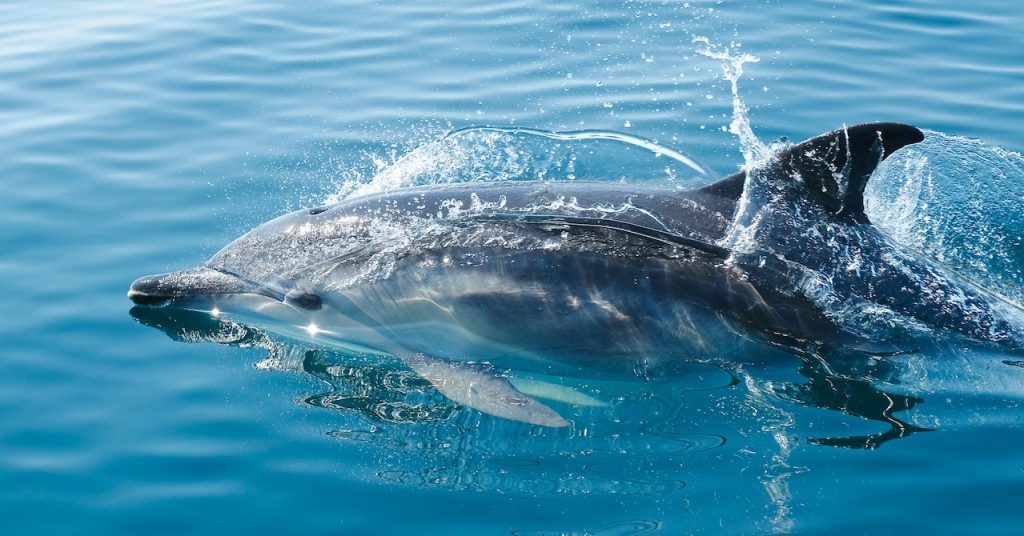Discover the fascinating lives of the marine life that inhabits the ocean’s depths as you set out on a journey of discovery there. The entertaining and perceptive creatures known as dauphins are among the ocean’s most alluring inhabitants. We will delve into the world of these fascinating creatures and examine the special adaptations that enable them to flourish in the aquatic environment in this post. We will shed light on the fascinating lives of dauphins and the crucial part they play in the delicate balance of the marine ecology, from their social habits to their special skills. So gather your scuba equipment and get set to explore the fascinating world of dolphin marine life!

Habitats and Distribution of Dauphins
A wide variety of marine species, including the majestic dauphin, can be found in the underwater world. These sociable and intelligent creatures can be found in a variety of ocean environments, from warm tropical waters to colder coastal regions. In this section, we’ll look at the various types of ocean habitats inhabited by dauphins, as well as the patterns of their distribution and migration.
A. Types of ocean environments occupied by dauphins
Dauphins are highly adaptable animals that can thrive in a variety of ocean environments. They can be found in both warm tropical waters like the Gulf of Mexico and colder coastal regions like the waters off the coast of California. Some dauphin species, such as the bottlenose dauphin, prefer shallow coastal waters, whereas others, such as the spinner dauphin, prefer deeper offshore waters.
B. Distribution patterns and migration routes
The distribution patterns of dauphins are influenced by various factors, including water temperature, food availability, and ocean currents. As a result, dauphin populations can vary greatly from one region to another. Some dauphin populations are resident, meaning that they remain in a specific area year-round, while others are migratory, traveling long distances in search of food and warmer waters. Understanding the migration routes of dauphins is crucial for effective conservation efforts, as these routes can help identify areas where they may be at risk from human activities, such as fishing and oil spills.
C. Factors affecting the distribution of dauphin populations
A variety of environmental factors, including water temperature, food availability, and ocean currents, influence the distribution of dauphin populations. Overfishing, pollution, and climate change are all examples of human activities that can have a significant impact on dauphin populations. Overfishing of certain fish species, for example, can reduce the food available to dauphins, resulting in population declines. Pollutants released into the ocean, on the other hand, can harm dauphin populations by altering their habitat and lowering the quality of their food source. We can better protect these fascinating creatures and ensure their continued survival in the underwater world if we understand the various factors affecting the distribution of dauphin populations.
Behavior and Social Interactions
Behavior and social interactions are critical to the survival and prosperity of dauphin marine life. These highly intelligent and social creatures exhibit a variety of fascinating species-specific behaviors.
A. Hunting and Feeding Behavior
Dauphins are expert hunters who eat a variety of fish and squid. To locate and capture their prey, they use echolocation and teamwork. Dauphins are famous for their impressive hunting techniques, which include herding schools of fish and isolating individuals for capture.
B. Communication and Social Organization
Dauphins have a complex system of communication, which they use to coordinate their hunting efforts and navigate their environment. They also have strong social bonds, and live in tight-knit groups, or pods, of several individuals. These social interactions are critical for their survival and play a major role in their daily lives.
C. Mating and Reproduction:
The mating and reproductive behavior of dauphins is equally intriguing. Female dauphins reach sexual maturity between the ages of 5 and 9, while males mature between the ages of 7 and 13. Mating typically occurs during the spring and summer months, with females giving birth to a single calf after a gestation period of 12 months. The strong social bonds within dauphin pods also play a role in mating and reproduction, with individuals often assisting in the care of young calves.
Threats and Conservation Efforts
Dauphins, as magnificent and graceful sea creatures, hold a special place in our hearts and imaginations. However, their survival is not guaranteed, and they face a number of threats that endanger their populations. This section will look at the various threats to dauphins, as well as the efforts being made to protect and conserve these magnificent marine mammals.
A. Human-related threats to dauphin populations
Pollution, overfishing, habitat destruction, and accidental capture in fishing gear are all human-caused threats to dauphins. These threats have the potential to devastate dauphin populations and endanger their survival.
B. Ongoing conservation efforts to protect dauphins
Numerous conservation organizations and initiatives have been established in an effort to mitigate these threats and protect dauphin populations. These efforts include programs for research and monitoring, education and outreach, and legal protections for dauphins and their habitats.
C. The importance of preserving dauphin marine life for future generations
Dauphins are an important part of our natural heritage because of their unique and complex social behavior, role in the ocean ecosystem, and cultural significance. It is critical that we work to protect dolphin marine life for future generations so that these magnificent creatures can thrive in our oceans.
The preservation of dolphin marine life is critical because it plays an important role in our oceans. We gain a better understanding of these magnificent creatures and the challenges they face by investigating the underwater world and the habitats, behavior, and social interactions of dauphins. Human activities and pollution endanger dauphin populations, but we can help to protect them through ongoing conservation efforts. We can ensure that future generations can enjoy the beauty and wonder of dauphin marine life in our oceans by raising awareness and promoting conservation efforts.


